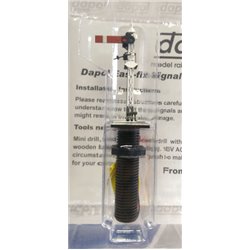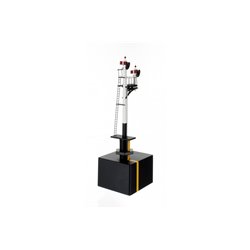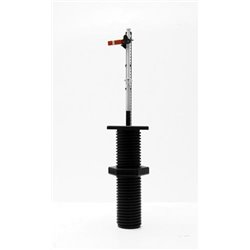There are a number of different options for attaching figures such as a horse and rider to a layout. Perhaps the...
No products
Product successfully added to your shopping cart
There are 0 items in your cart. There is 1 item in your cart.
Search Tips
When did semaphore signals stop being used in the UK?
Semaphore signals, those distinctive mechanical arms that once graced railway lines across the UK, were largely phased out by the late 20th century. Their initial use began in the mid-19th century, becoming a mainstay of British railway signalling for well over a hundred years. However, by the 1980s and 1990s, advances in signalling technology, combined with an emphasis on efficiency and safety, led to a widespread replacement of semaphore systems. This shift primarily occurred as the railway network moved toward more centralised and automated signalling.
One of the key drivers behind the replacement of semaphore signals was the move to electric colour light signals. These signals offered several advantages over traditional semaphore arms: they were more visible in various weather conditions, required less maintenance and could be more easily controlled from centralised signal boxes. Semaphore signals, with their moving parts and need for constant upkeep, were increasingly seen as outdated and less reliable for modern, high-frequency rail operations.
For a railway modeller, semaphore signals might represent a nostalgic and visually striking element of British railway history. Their phased-out use means they carry a historical value, especially on heritage and preserved railway lines where some are still operational today. Places like the North Yorkshire Moors Railway and the West Somerset Railway maintain their semaphore signalling as part of their period charm, allowing visitors to experience a slice of railway history.
Despite the transition, semaphore signals remained in operation in some rural areas well into the 2000s. Some regions, particularly in the West Country, parts of Wales and northern England, continued using semaphore signals longer due to the high cost of upgrading these less trafficked lines. This delay in modernisation allowed semaphore signals to linger in these areas, creating a patchwork of older and newer signalling technology across the UK’s rail network.
Network Rail, the UK’s main rail infrastructure operator, committed to phasing out the last remaining semaphore signals as part of its broader modernisation efforts. By 2020, most of these older signals had been replaced, though a few isolated examples remain in remote or less critical sections of the network. The goal has been to unify signalling under the European Rail Traffic Management System (ERTMS) and other modern, digital protocols, improving safety, efficiency and interoperability across the network.
For modellers, semaphore signals bring both technical interest and aesthetic appeal. Semaphore signals have unique designs, from home and distant signals to junction and shunting signals, each providing rich detail and realism to a model railway. Their movement and mechanical look offer contrast to static modern colour lights, making them a focal point on many model layouts, especially those representing the pre-1980s period.
Incorporating semaphore signals into your railway model can evoke the golden age of British railways. With kits and resources available for modelling these signals, you can capture the intricacies of their operation, from lever frames to signal arms. Semaphore signals are a wonderful way to connect with British railway history, bringing a touch of authenticity and nostalgia to your layout.
Click here to receive the tips weekly in your mailbox. You can unsubscribe at any time.










